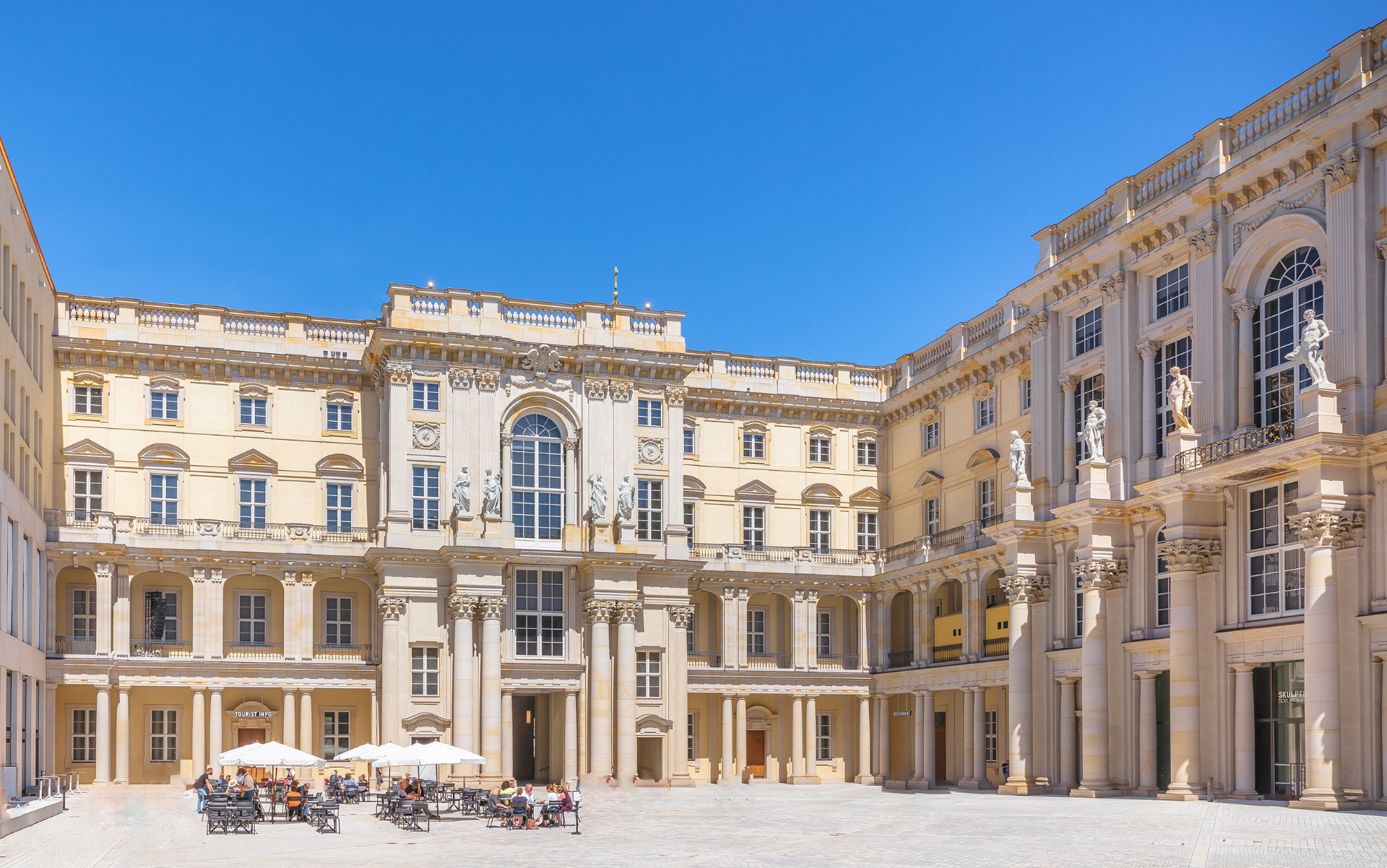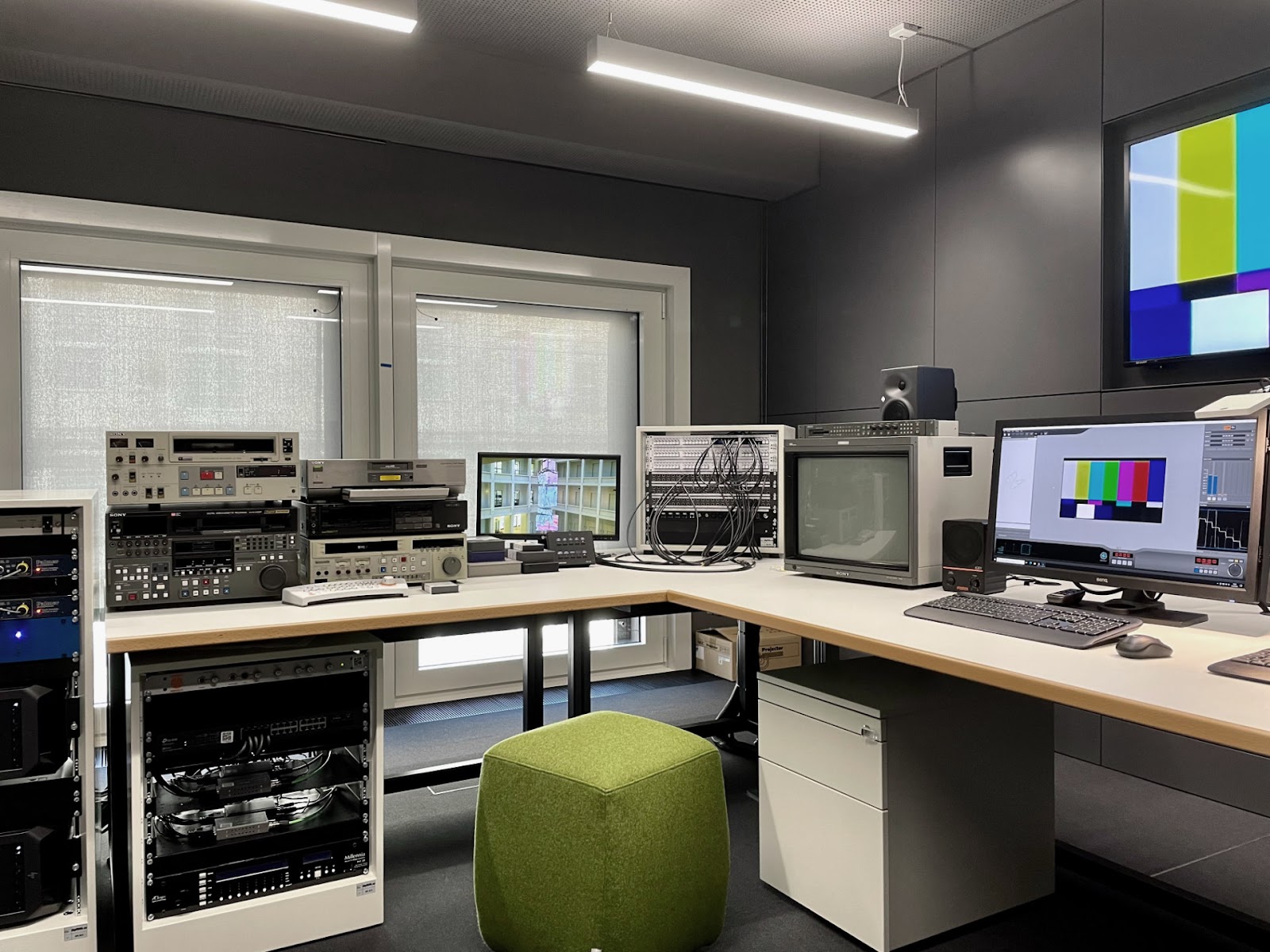Berlin, 07. December 2021
QUADRIGA and the new Palace of Berlin

© Humboldt Forum Foundation in the Palace of Berlin
Photo: Alexander Schippel
Within the rebuild of the former historical Royal Palace in the center of Berlin - QUADRIGA serves for the digital preservation of audiovisual carriers from Berlin Phonogramm Archive, department of Ethnological Museum and part of Prussian Cultural Heritage Foundation.
The new Berlin Palace incorporates a modern infrastructure with a theater, a movie theater and an auditorium as well as the high-tech Klangwerkstatt (Sound Workshop), maintaining the so-called Audio- and Video-Lab which is used for the digital preservation of historical audio and video carriers with QUADRIGA•Audio, DOBBIN and QUADRIGA•Video. Some of the historical sound documents of the Berlin Phonogramm Archive collection are over 120 years old, and a unique resource for researchers to get phonetic and linguistic insights from the time of the Empire and the Weimar Republic. Berlin Palace is currently considered internationally as one of the most ambitious cultural projects.

Photo: Karolina Sus
The decision to use Cube-Tec products for the digitization of our audiovisual media has proven to be the right one. During the commissioning of our studios it became clear that thanks to the flexibility of QUADRIGA and the many years of experience of the Cube-Tec team, an optimal adaptation to our needs was implemented.
- Karolina Sus, Restorer for audiovisual cultural property
For the company Cube-Tec, which has been committed to the preservation of audiovisual cultural heritage with its products for over 25 years, this project has a special significance. Not only because the Berlin Palace - with its construction costs of 480 million - is considered one of the most ambitious cultural projects in the world (and is the subject of controversial debate).
- Tom Lorenz, Managing Partner, Cube-Tec International
About the history of Berliner Schloss
The Berlin Palace was the seat of the Brandenburg Kurfürsten, Prussian monarchs and the German Kaiser from 1443 to 1918. After the November Revolution in 1918, the first German republic was proclaimed from the balcony of the baroque palace. During World War II, the palace was severely damaged and the East German SED government decided to demolish the city palace in 1950. Only parts survived the pull-down to the present day. Due to its historical significance, the original portal IV was integrated into the Staatsratsgebäude (Council of State Building) during GDR times, which was completed in 1964 and is located in the immediate vicinity of the Berlin Palace. After the fall of the Berlin Wall, this building was used in different ways, after all, in 2001, the then German Chancellor Gerhard Schröder had his Berlin official residence there.
After the end of the monarchy in 1918, the castle was used for museum purposes until its destruction in World War II. This little-known history of the palace as a center of culture and science is being followed up by its reconstruction from 2013 to 2020. It is the seat of the Humboldt Forum; this presents collections from the National Museums in Berlin, the Berlin City Museum and the Humboldt University in Berlin, and at the same time aims to become a lively meeting place for people and world cultures. At the same time, the Humboldt Forum houses, among other things, various event rooms with state-of-the-art media equipment, an Audio- and Video-Lab, which will be used for current productions but also for the digitization of historical audio and video carriers. QUADRIGA•Audio, DOBBIN and QUADRIGA•Video are in operation here.

